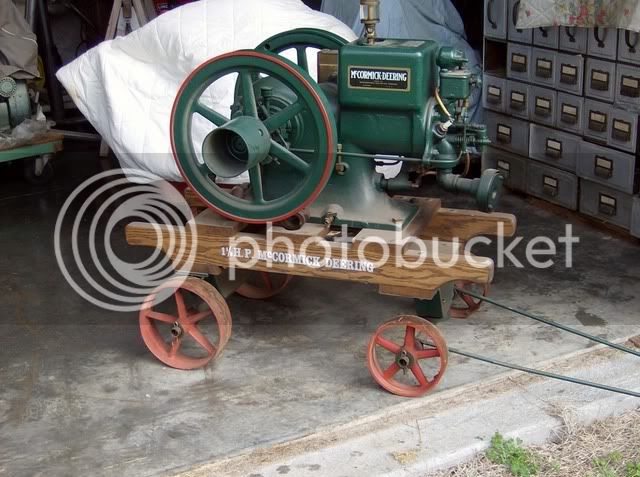Hi I am a Newbie here, and this is my first post. I couldn't resist reponding to this post after lurking for some time.
Another marine engine based on the hit and miss principle was the Bolinder from Sweden.
Back in the early 1980's I helped out on restoration of a Narrowboat fitted with one of these beasts. The engine was made in the early 1920's and had a number of interesting features, including a hit and miss governor. The basic spec was a 15HP single cylinder 2 stroke semi diesel. Bore and stroke were about 7 inches each, with a capacity of about 7.5 Litres.
An interesting innovation was that it had no gearbox, it was a direct reversing engine. A control lever controlled motion work which disengaged the forward fuel pump and engaged a second pump, which gave the engine a early squirt, before it reached TDC. The objective being to stop the engine dead and send it into reverse. Quite a strain on components and from memory, not that reliable.
Being a Semi Diesel, it had a hot bulb which needed to be heated to glowing red, before kick starting the beast, via a spring loaded pin in the flywheel. Another control varied the spray angle of the diesel injector. When idling or under light load, the injector was set to spray a wide cone, which kept the bulb hot enough to keep the engine running. Under full load the injector was adjusted to fire a narrower jet, for increased power.
The following link is to a video of the boat I worked on and the soundtrack is a great example of the hit and miss governor in action.
http://sickle.freehostia.com/videoTug1.html
More info on Bolinder engines here
http://www.oldengine.org/members/diesel/Marine/bolinder.htm
Stuart.
P.S. Not yet started my first engine, but working on it !






